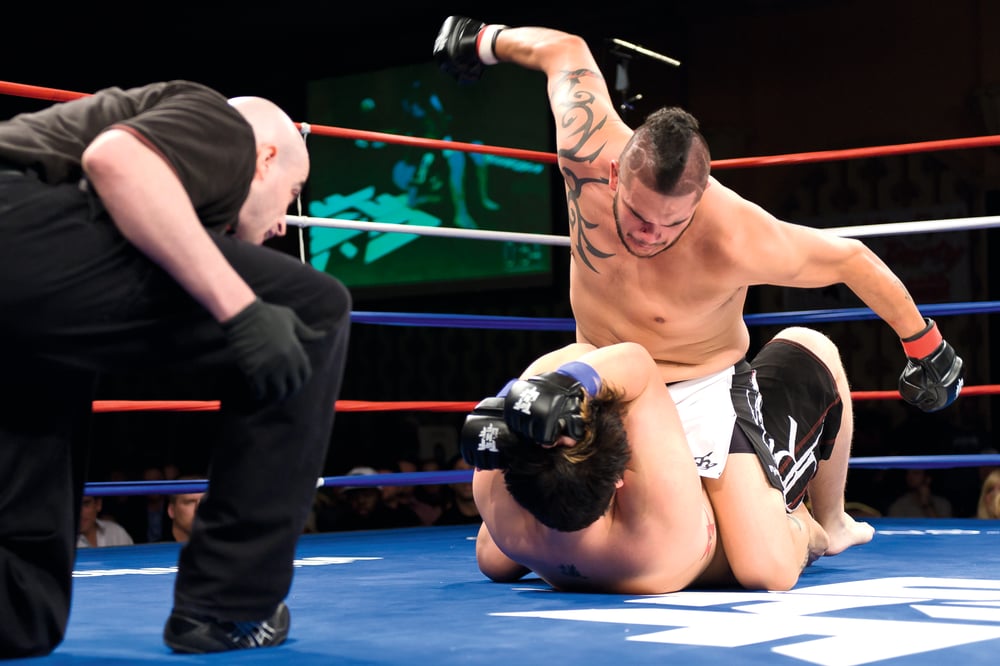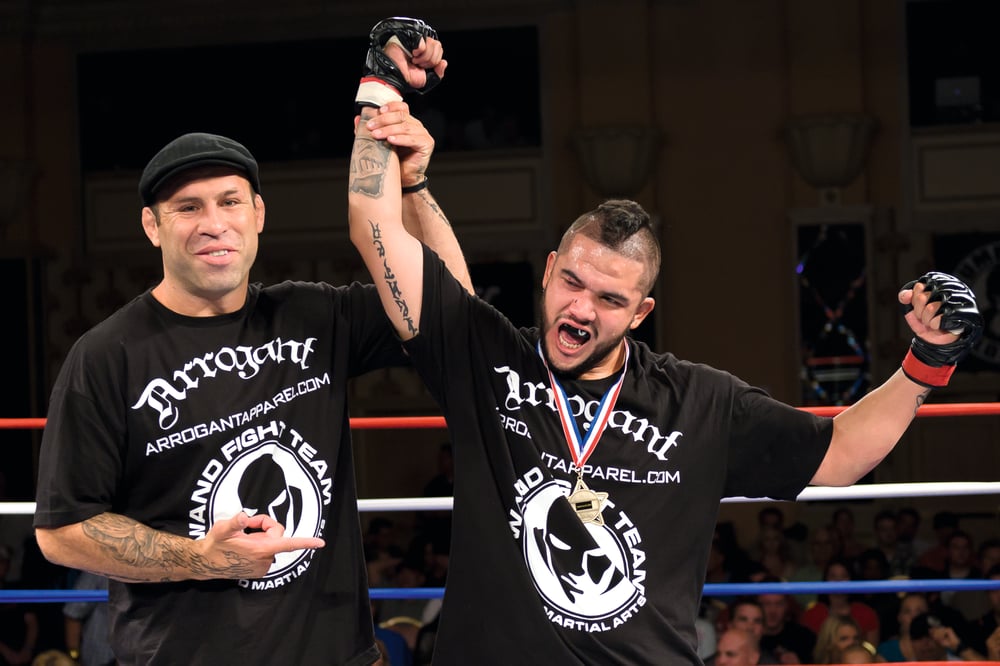
Issue 070
December 2010
Every fighter started somewhere. Tomorrow’s MMA superstars are commencing their journey on the amateur fight scene right now – and they’re doing it for free.
Photo Credits: Ray Kasprowicz & Adam Crowther/fightshop.com
Predictably, amateur means the same thing to MMA as it does to any other sport. It’s a slightly watered-down version of the full product in order to cultivate future prospects in a safer(ish) yet authentic environment. In the case of mixed martial arts that generally means gloves with extra padding and no punches to the head on the ground. Of course, there are variations. Some rule sets don’t allow knees to the head while standing, or might require padding on the shins. There’s a constant bottom line no matter the rules in the ring: if you’re fighting amateur rules you don’t get paid. It comes with positives but some people are seated resolutely in the ‘Detractors’ section (a certain Dana White, UFC president, among them).
If on a grand scale MMA’s infrastructure is flapping around in its infancy, then by comparison its amateur counterpart is still snuggled inside the womb. For that reason the amount of present-day MMA superstars that once threw down with 6oz gloves isn’t exactly extensive. On the Las Vegas amateur scene, some years ago, Jon Fitch burrowed his grizzly main into the solar plexus of opponents in the formative days of his so-called lay ‘n’ pray fight style. Robert Drysdale, a world-champion grappler, has recently switched from amateur to pro rules (converting his 1-0 amateur record to 1-0 in pro so far) and is understandably tipped for big things. As is Ryan Couture, son of Randy, who already experienced the power of his last name by gaining a contract with Strikeforce before his victorious pro debut in August (5-1-1 as an amateur). In Brazil, the exciting 20-year-old UFC lightweight Charles Oliveira, who’s pocketed two ‘Submission of the Night’ bonuses, started out under amateur rules too.
The Las Vegas-based Tuff-N-Uff is one of the largest and most successful amateur organizations in the US. It still draws big crowds in the UFC’s backyard despite not putting on pro fights. Barry Meyer, president of the company (which is joined by TrueSport and MMA Xplosion on the Las Vegas amateur scene), says: “There are so many fans, not just of the UFC, but of up-and-coming talent. The fighters that are maybe 18 now, and they want to get to the UFC, this is their stepping stone.” While the Tuff-N-Uff fighters might be amateurs, they train with professional teams at Xtreme Couture, Wanderlei Silva’s gym, and Legends in Hollywood, among others, and it’s a similar story for any organization near a professional fight team. For all intents and purposes many of these amateur fighters are pros, yet to make the jump to a paid in-ring career. Ryan Couture says transitioning from general-public classes to pro-team training at Xtreme Couture improved his toughness, conditioning and confidence. “For one, it forces you to get better fast to not get killed,” he laughs. “And it also just takes that confidence to the next level when you’re stepping in against an amateur, knowing there’s nothing he’s going to do to you that you haven’t had done to you in practice.” Because of this high-level training Barry Meyer says that amateurs today are better than pros were ten years ago.
On the US East Coast, a 2,000-mile flight from Las Vegas, Doug Muhle is the president and founder of Carolina Fight Promotions (CFP), an organization that puts on combined professional and amateur cards in North Carolina. Fight shows that present amateur-rules and pro-rules fights in one night are common across America and Europe. While the sun-drenched Southern state doesn’t host the same high-level fight camps boasted by Las Vegas, their amateur fighters are no less eager to make it to the big shows. Doug says: “CFP still gives the Southern fighter a chance to fight in front of his hometown crowd, and a chance to marquee himself and his career in the sport of MMA in the hopes of getting noticed.” Doug has done such a good job that CFP have been invited to the 10,000-seat RBC Center in Raleigh, North Carolina, when years before they’d turned him away. Amateur MMA, just as much as it’s full-ruled brethren, is helping MMA gain a foothold in regions that perhaps don’t have the depth of professional fighters found in Rio, Las Vegas or even Tokyo.
Japan, unlike most countries, has an entrenched and tightly structured MMA program. Instead of fighters slugging away on the amateur circuit until they need money and suddenly go professional, Japanese scrappers typically join a Shooto gym and work their way through local tournaments that require protective equipment be worn at D- and C-class levels (no knees or striking on the ground, and no striking on the ground respectively) before being allowed to compete in B- and A-class professional Shooto. The idea is to provide a gradual system where potential professional fighters develop over time.
In Brazil, however, amateur MMA struggles. The country’s MMA patriarch Marcelo Alonso explains the country saw its first amateur events under C-class Shooto rules in 2002 although follow-ups have been scattered. “The most serious amateur event was promoted by former director of Tatame magazine José Maurício Costa in 2008,” says Marcelo. “In one edition in Rio de Janeiro he made more than 53 amateur fights in one day. That event was the debut of Charles ‘Do Bronx’ Oliveira.” With the relatively young Watch Out Combat Show in Rio (that has bouts under both pro rules and its softened counterpart), and a new amateur-rules organization taking off in 2011 under veteran Carlos Barreto in the same city, the little brother of the full-contact big show could begin to foster the growth of more UFC superstars in one of the countries that laid the foundations for MMA.
However, Marc Goddard, UFC referee and organizer of the UK-based Amateur Mixed Martial Arts Fighting Championships (AMMA), says that the spectrum of people competing in amateur MMA doesn’t begin and end with hopefuls pining for the Las Vegas lights. Lawyers, car mechanics, students: all try their hand at MMA to get a taste of their favorite sport. Instead of throwing themselves in with the pros, however, they’re opting for the less daunting amateur channel that in the UK includes Strike and Submit Contenders, Grapple and Strike, as well as The MMA League, in addition to AMMA. While Marc says that having an amateur mixed martial arts scene is massively important, he warns: “There’s a lot of people in the UK doing things for the right reasons, and there’s a lot of people in the UK who think they’re doing things for the right reasons – and you can take it from me they’re not.” The spread of amateur MMA means that some people are too eager to become fighters yet don’t fully register the risks. Combining that with unscrupulous promoters who are equally eager to let the inexperienced scrappers step into the cage for their own benefit is quite clearly an issue. “I’ve actually gone over [to cornermen] after fights and said, ‘Don’t put this kid in again,’” recounts Marc from his history of refereeing events the width and breadth of Britain every week. “Coming from the fighting background I can see it, I can smell it. These kids they’re being pushed into fights or they think in their heads that they’re ready for fights when quite clearly they’re not. The guys who are supposed to be guiding them and looking after them, they’re not being put through the proper channels.” With a sport that appears to have so many rewards, human nature will always mean that some people are too willing to leap ahead of themselves. At least amateur MMA is there as a slightly more forgiving platform on which to make these mistakes.
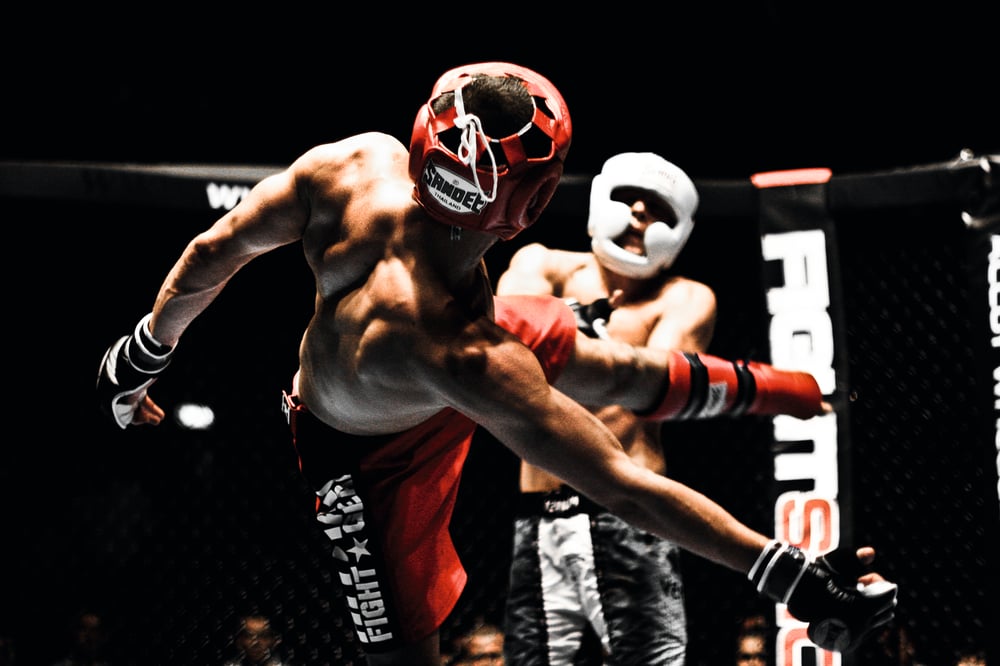
Amateur mixed martial arts does come with its issues. Perhaps the most contentious is that fighters aren’t paid for their services yet promoters still charge entry to spectators and make money doing so. However, Barry Meyer reminds that the revenue doesn’t just go straight in promoters’ pockets. “It’s not like this is a get-rich-quick business. I have a lot of fees from production to rental of the facility, to lasers, to music, to a lot of other things – it’s only fair, I think, to put on these events. And if we’re profitable at the end of the day then that’s great but that’s not our whole motivation.”
Marc Goddard doesn’t approve of amateur fighters leaving without a fight purse. “I have amateur fighters walking out of my show with £2,000 plus, because I put the show on just for the fighters and they keep 50% of their ticket sales,” states Marc, who says his fighters can earn four times as much as their professional compadres. “For a standard £20 ticket they would keep £10 and so the incentive to fight on the show is huge. There’s no one going to fight on my show and get punched in the face for free. It’s just not going to happen. There’re a lot of people out there who’ll exploit that and take advantage of it; not me.”
Doug Muhle also offers the point that college sportsmen and women also aren’t paid but universities still make money from their efforts and it passes without issue. But, though college football and basketball are big business, it could be argued that the participants are getting a university education out of the bargain. However, for promotions like Tuff-N-Uff they’ll happily spend extra money trying to get TV exposure for their fighters (Inside MMA being one partner) or employ good, old-fashioned altruism. “We do a lot of things for the community with Unity Through MMA 101 [a program that provides MMA tuition to disadvantaged youths] with the Boys and Girls Club of Las Vegas, and give back a lot. It’s not like this is a UFC-style, multi-million dollar corporation so I don’t think there’s any problem with [charging spectators].”
Though promotions like Tuff-N-Uff, CFP and others are responsible, in certain countries and areas of the US there are some start-ups looking to make the most money possible off the (free) backs of eager amateur fighters, putting on sub-par shows but still asking fans the full whack for tickets. Doug Muhle has experienced this first hand and says not only is it wrong, these low-rent shows are turning potential US fans off the sport as well. “[In North Carolina] you can get a promoter’s license for $500,” exclaims Doug. “So you have every Tom, Dick and Harry trying to do it, which is killing the fan momentum down here right now. If they had kept it where you had to have $100,000 in working capital and some criteria behind getting a promoter’s license then we would only be having quality-run shows by organizations that have the funding to put on a world-class show.” Furthermore, US states expect income from all MMA shows through admission taxes and seat taxes (one of the reasons they end-up legalizing MMA). With these “small-donkey promotions,” as Doug puts it, that’s not happening.

Just as the amateur fighters are honing their skills without the pressure of a pro record, so too are the officials. On amateur fight cards like MMA Xplosion or Tuff-N-Uff the judges are inexperienced (US athletic commissions let officials loose with training wheels on amateur shows before promoting them to the pro events). Some would presume they’re even more likely to produce dubious decisions than their professional counterparts. The real problem, though, comes with amateur referees. Granted, a bad call from a newbie ref isn’t as destructive to an amateur’s future fight prospects as a pro’s, but the physical welfare of an amateur is no less deserving of expert judgment. But still, amateur officials have to start somewhere. Ultimately it’s better a bad ruling doesn’t happen to a pro trying to support their family, even if that means an amateur has to take the brunt of it. Doug Muhle says: “I see such a wide range of calls down here that it’s really disheartening to a lot of the fighters who are versed, and pro fighters especially... It’s getting better but it’s been tough. It’s a negative for the sport.” Ryan Couture offers that officiating, whether it’s amateur or pro, can be hit or miss: “I definitely find myself disagreeing with calls or disagreeing with decisions more in the amateur fights, but, really... as long as it’s safe. And I haven’t seen too many serious injuries as a result of bad refereeing. The outcome of the fights as an amateur isn’t really that important, it’s the experience that you’re in there for. So, I think it is a little bit lower quality overall, but on the whole it’s also not as important.” Doug Muhle, who lobbied vigorously with his own money to get MMA sanctioned in North and South Carolina, says experiences of officiating in those states mean he’d like to see more pre-fight training. “We had a 14-year ban here, then we went right into having mixed martial arts fights. The state tried to take precautions to groom referees and judges, but at the same time you can’t groom somebody in three months in the fight sport.” Although amateur officiating is a necessary process in order to create experienced officiating, perhaps more time in a classroom is necessary in a sport that has such a high price connected to a referee’s split-second decisions. While officiating can be a small blight on the sport, Doug Muhle states that might change for the better in the future: “Let’s just hope more [fighters] that are over the hill take their role or position and keep helping the sport by giving their expertise as a judge or a referee.”
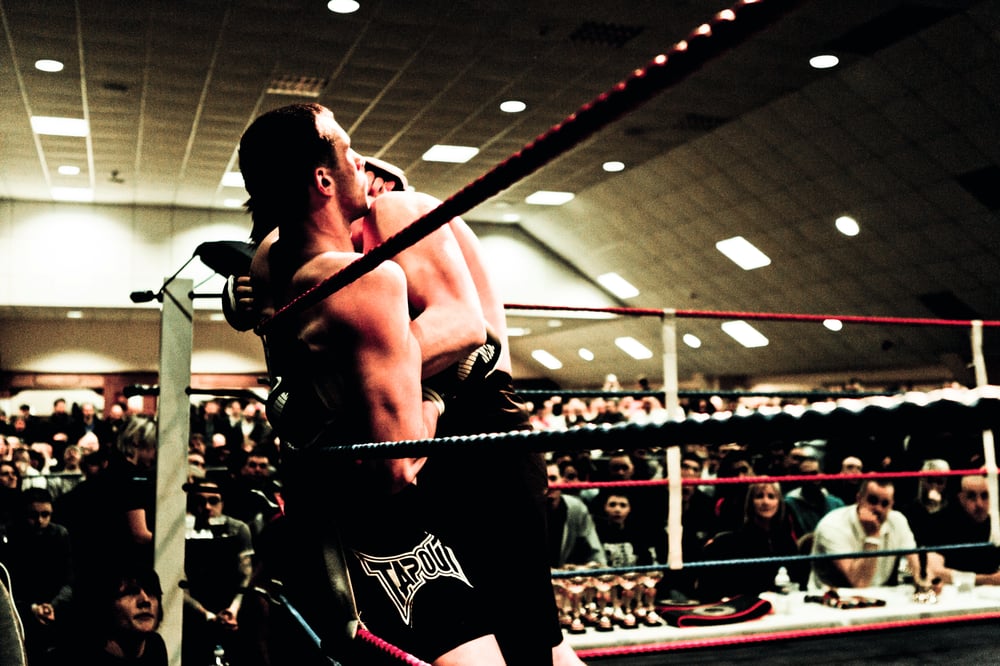
Going forward there can only be positives emerging from amateur MMA for the professional scene. Everyone can agree that the more time amateurs have to hone their game the better their performances will be during their pro career – a benefit for everyone. Ryan Couture says: “You’re going to see higher-quality fights on pro shows, out of the guys that are 0-0, 1-0 and just starting out. As it stands now, those are basically amateur fights with longer rounds in most shows given the experience level of the competitors. Having those guys actually technically be ten fights into their amateur career is really going to improve how they come out and perform in their first pro fights.” Plus, being on high-production amateur shows mean they’re all that more prepared for ‘the show’, as Barry Meyer explains: “We try to make it as much of an experience as we can to prepare these athletes. We bring in lasers and smoke; we give them a really good experience. We treat them really well; we get them enormous exposure via TV, magazines, Internet, things like that.” If future prodigies are less likely to buckle under the cumulative pressures of full-time fighting as a result of their amateur circuit experiences that can only be a positive.
Furthermore, for those who long for mixed martial arts to become an Olympic sport, the amateur brand would be the one transposed – further strengthening its relevance. If this were to ever come to fruition various countries’ governing sports bodies would also be obliged to have these Olympic-bound amateur sportsmen and women on their payroll along with sprinters and pole vaulters – toppling the issue of unpaid fighters. Over time, amateur MMA will become an integral part of the sport – just as it is in boxing and kickboxing. Though the effects of an amateur MMA system are yet to be felt, the cumulative benefits of an honest structure will ultimately enhance the final product that fans experience in the main events of UFC pay-per-views. Amateur MMA is literally the future of the sport.
MY DAD'S BIGGER THAN YOUR DAD
Ryan Couture on his amateur MMA experience
FO: Fighters are often keen to get to the pros but you’ve taken seven amateur fights before making the jump. How come you’ve paced yourself?
Ryan: “Well, I knew for one, having the last name that I do, things were going to get real crazy real fast when I jumped to the pro level. I wanted to make sure I was comfortable with everything, and to kind of work out the kinks as an amateur where the record doesn’t matter and there’s not quite as much scrutiny on me. That was the biggest thing. It was nice to just have slightly tamer rules, shorter rounds and a lower competition level to figure this thing out and kind of get my feet wet without having quite as much to worry about.”
Do you think fighting as an amateur first improved your abilities in a way that going pro straightaway wouldn’t?
“Absolutely. I see guys come through the gym all the time that are kicking themselves for jumping straight to the pro ranks and feel like they got fed to the wolves. If you come out 0-3 as a pro it can be real tough to even get fights let alone make a living fighting. It has long-term effects on a guy’s career. So I’m very happy that I did it the way I did.”
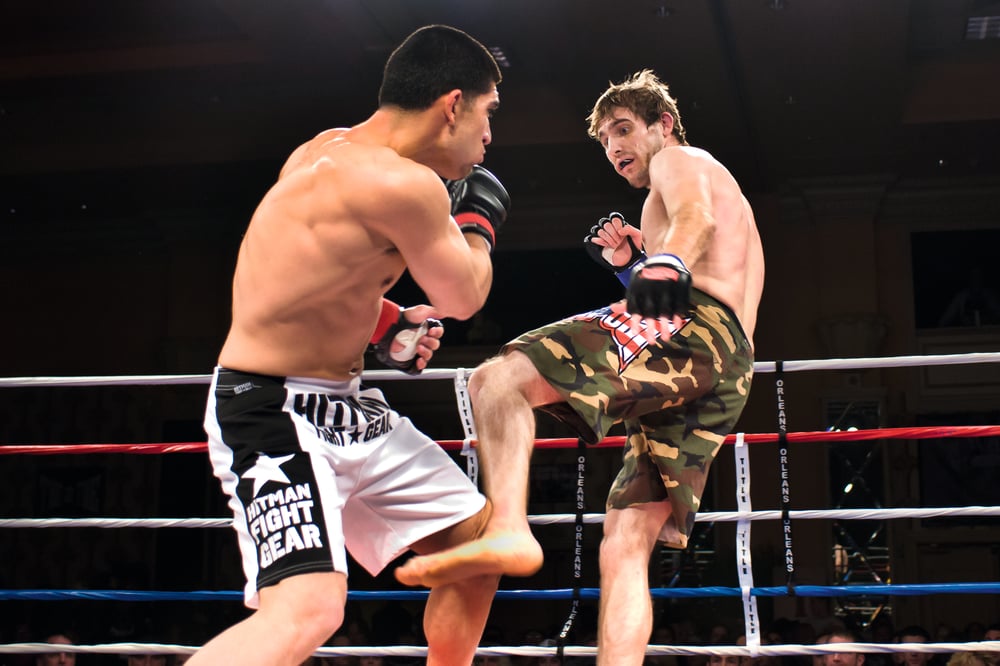
Was this something that you made a decision on or was it something your father pushed for you as well?
“It was 100% my decision. Actually, as far as the other pros that train here, they were about a 50/50 split on whether they thought it was a good idea to go amateur. Some were like, ‘Why? What’s the difference? You’re doing the same thing, you’re just not getting paid.’”
As you weren’t paid for fights how did you support yourself financially going through this thing?
“I’ve been fortunate enough to be able to work at the gym and still have a flexible enough schedule to train really at a similar level to what a lot of the pros do. So that’s been a blessing for me. I’ve also been lucky to come into some sponsorship money that’s helped me focus more on training and cut back hours at the gym a little bit.”
HOT YOUNG AMATEURS
Amateur circuit ones to watch
Jimmy Jones, 7-3
A featherweight out of Xtreme Couture on a seven-fight win streak and with the dubious nickname ‘Rabbit’.
Jerry Shapiro, 4-0
A bantamweight Cobra Kai Gym standout without a decision on his unblemished record.
Chris Holdsworth, 6-0
Las Vegas-based BJJ black belt and Tuff-N-Uff bantamweight title holder with four wins by submission.


